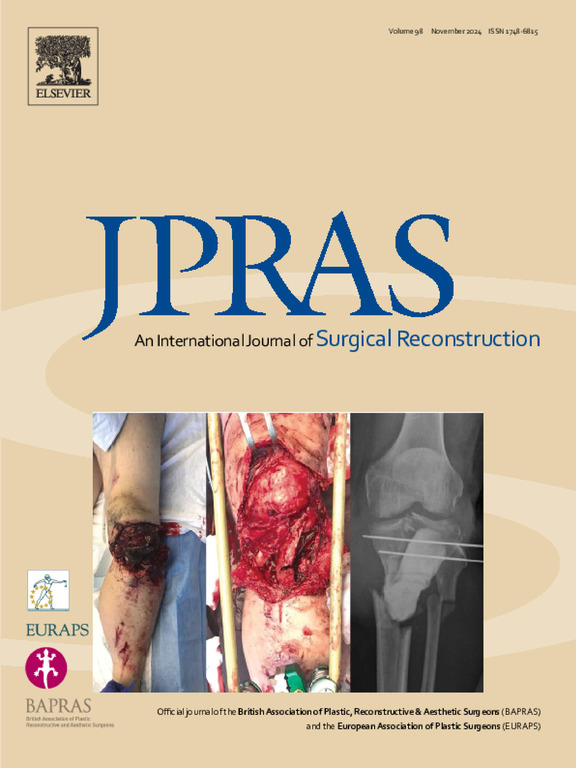A systematic review of axon count measurement and reporting for nerve transfers in the upper extremity
IF 2.4
3区 医学
Q2 SURGERY
Journal of Plastic Reconstructive and Aesthetic Surgery
Pub Date : 2025-05-09
DOI:10.1016/j.bjps.2025.05.003
引用次数: 0
Abstract
Introduction
Axon counts in the literature vary by source and method, and no single source summarizes all brachial plexus nerves. This review aims to compile these counts in one article and assess comparability across studies.
Methods
A systematic review was conducted in November 2023, according to the PRISMA guidelines. Four databases were assessed using different variations of the terms "nerve axon count* AND “upper extremity". 539 articles were found and screened, and after full text assessment of the pre-selected articles, 54 articles were finally retained. For these articles, the axon counts, SD, and ranges were collected for all upper extremities’ nerves. If more than one article counted the axons of a specific nerve and if the difference between the counts was less than 100%, an average count was calculated.
Results
In the 54 articles a total of 56 nerves were assessed. Axon counts of 18 nerves were done only in a single study. In the comparison between the averages in between studies, in 20 nerves the difference excided 100% between the highest and lowest value. For 16 nerves a metanalysis could been performed and presented in the article.
Conclusions
Our study revealed enormous differences in axon counts across various studies, reaching up to a factor of 87 between the averages from one study to another. Additionally, the quality of the methods of these studies varies, particularly since axon count is frequently reported as a secondary or tertiary outcome. This insight cautions surgeons against using axon counts from studies with differing methodologies to plan nerve transfers.
上肢神经转移的轴突计数测量和报告的系统回顾
文献中的轴突计数因来源和方法的不同而不同,没有一个单一的来源概括了所有的臂丛神经。这篇综述的目的是在一篇文章中汇总这些计数,并评估研究之间的可比性。方法根据PRISMA指南,于2023年11月进行系统评价。使用“神经轴突计数*”和“上肢”的不同变体对四个数据库进行评估。筛选出539篇文章,经过对预选文章的全文评审,最终保留54篇文章。在这些文章中,收集了所有上肢神经的轴突计数、SD和范围。如果多于一篇文章对特定神经的轴突进行计数,并且计数之间的差异小于100%,则计算平均计数。结果54篇文章共评估了56条神经。仅在一项研究中对18条神经进行轴突计数。在两组研究的平均值比较中,有20条神经的最高值和最低值之间的差异超过100%。对于16条神经,可以进行荟萃分析,并在文章中提出。我们的研究揭示了不同研究中轴突数量的巨大差异,不同研究之间的平均值相差高达87倍。此外,这些研究方法的质量各不相同,特别是因为轴突计数经常被报道为次要或第三次要结果。这一见解提醒外科医生不要使用不同方法研究的轴突计数来计划神经移植。
本文章由计算机程序翻译,如有差异,请以英文原文为准。
求助全文
约1分钟内获得全文
求助全文
来源期刊
CiteScore
3.10
自引率
11.10%
发文量
578
审稿时长
3.5 months
期刊介绍:
JPRAS An International Journal of Surgical Reconstruction is one of the world''s leading international journals, covering all the reconstructive and aesthetic aspects of plastic surgery.
The journal presents the latest surgical procedures with audit and outcome studies of new and established techniques in plastic surgery including: cleft lip and palate and other heads and neck surgery, hand surgery, lower limb trauma, burns, skin cancer, breast surgery and aesthetic surgery.

 求助内容:
求助内容: 应助结果提醒方式:
应助结果提醒方式:


